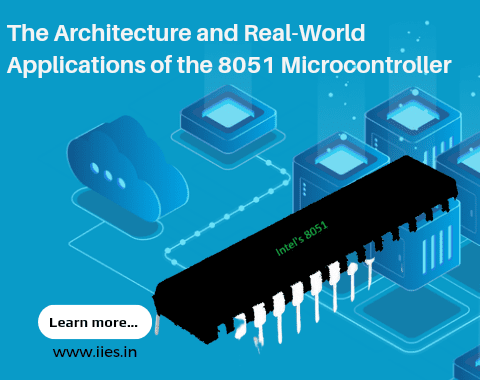
In this blog, we will delve into the architecture and real-world applications of 8051 microcontrollers. The 8051 microcontroller is a widely used integrated circuit that has found its place in numerous electronic devices and systems. With its versatile architecture and powerful capabilities, it has become a cornerstone in the field of embedded systems.
8051 microcontroller continues to play a significant role in the field of embedded systems and electronics due to its simplicity, versatility, and wide range of applications. Its enduring popularity can be attributed to its robust architecture, extensive programming options, and continuous advancements. Whether you’re a hobbyist or a seasoned professional, the 8051 microcontroller remains a valuable tool for bringing your ideas to life in the world of embedded systems.
To begin, let’s understand what exactly an 8051 microcontroller is. An 8051 microcontroller is a single-chip computer system that combines the functionalities of a microprocessor, memory, and various peripheral devices on a single integrated circuit. This integration provides a compact and efficient solution for controlling and managing electronic systems.
The architecture of 8051 microcontrollers enables it to be utilized in a wide range of applications. Its versatile nature allows it to be used in industrial control systems, home automation, robotics, the automotive industry, medical devices, and many more. The ability to interface with external sensors, actuators, and displays makes it a suitable choice for various real-world applications.
The architecture of 8051 microcontrollers is based on Harvard architecture. It features separate memory buses for instruction and data, which allows simultaneous fetching and execution of instructions. This architecture also includes on-chip memory, such as RAM and ROM, which reduces the need for external memory components.
The internal architecture of the 8051 microcontroller consists of several key components, including the CPU, memory units, I/O ports, timers/counters, and serial communication interfaces. Each of these components plays a crucial role in the overall functionality of the microcontroller. The CPU is responsible for executing instructions, while the memory units store data and programs. The I/O ports facilitate communication with external devices, and timers/counters provide timing and synchronization capabilities.
The instruction set of the 8051 microcontroller is designed to provide a wide range of operations and functionalities. It includes instructions for arithmetic operations, logical operations, data transfer, branch instructions, and many more. The instruction set is optimized for efficient execution and allows developers to write compact and robust programs.
Microcontrollers, including the 8051, have found their use in numerous real life applications of Microcontrollers. They are commonly used in home automation systems, where they control lighting, heating, and security systems. In the automotive industry, microcontrollers are utilized for engine management, ABS, airbag control, and other critical functions. Medical devices such as pacemakers, insulin pumps, and blood pressure monitors also rely on microcontrollers for their proper functioning.
The 8051 microcontrollers offer several advantages contributing to their popularity in the embedded system industry. Firstly, they are cost-effective and require minimal external components, making them an affordable solution for many applications. Additionally, their low power consumption and small size make them suitable for battery-powered and portable devices. The availability of a vast community and resources dedicated to 8051 development further enhances its appeal.
Apart from the 8051 microcontroller, there are several other popular microcontroller families in the market. Three notable examples include the Arduino Uno, Raspberry Pi, and STM32 microcontrollers. Each of these microcontrollers has its own strengths and is widely used in various applications, ranging from hobbyist projects to industrial automation.
While the 8051 microcontroller provides great functionality, it does have certain limitations. One of the main limitations is its limited processing power and memory capacity compared to more modern microcontrollers. Additionally, the 8051 architecture may not support advanced features like floating-point calculations or complex algorithms, limiting its use in certain applications.
This blog has extensively discussed the 8051 microcontroller architecture and its real-world applications. We have explored its internal architecture, instruction set, advantages, and limitations. The wide range of applications where the 8051 microcontroller is utilized, along with its cost-effectiveness and versatility, make it a crucial component in embedded systems. As technology advances, newer microcontrollers with improved capabilities may emerge, but the 8051 remains an important milestone in the history of microcontrollers.
Indian Institute of Embedded Systems – IIES